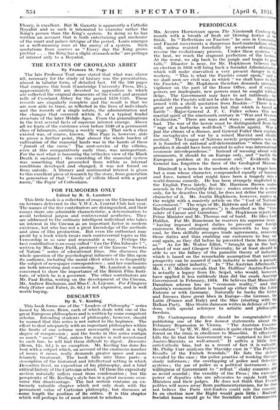THE ESTATES OF CROWLAND ABBEY By Frances M. Page The
late Professor Tout once stated that what was, above all, necessary for the study -of history was the presentation, almost in tabular form, of detailed fact. Of the 500 pages that comprise this book (Cambridge University Press, 215.), approximately 350 are devoted to appendices in which are collected the original docUrnent:s of the Court and account rolls of Crowland- Abbey for the period 1258-1528. These records are singularly complete and the result is that we -arc now able to trace, as reflected in the lives of individuals and the records of a single estate, the administration and the changes that occurred within it, of a typical feudal structure of the later. Middle Ages. From the generalizations in the text several facts of supreme interest emerge. Above all we learn of the existence even before 1348 of a permanent class of labourers, earning a weekly wage. That such a class existed was, of course, known. Miss Page is, however, able to prove a further point, that almost the whole burden of cultivation of the manorial lands was in the hands of these " famuli of the curia." The rent-service of the villeins, even at this comparatively early time, was unimportant. For the rest what is becoming the orthodox view of the Black Death is sustained ; the crumbling of the manorial system
was something that proceeded from within as internal conditions developed and changed, it was not forced on from outside. A literary and sentimental interest is given to this excellent piece of research by the story, from generation to generation of that " family of villein blood with a great name," the Pepiz' of Cottenham.








































 Previous page
Previous page